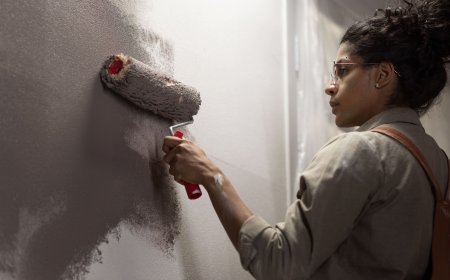Lawn Aeration and Dethatching Tips for Vancouver Lawns.
Discover essential lawn aeration and dethatching tips tailored for Vancouver's unique climate. Achieve a lush, healthy lawn with our expert advice.

A lush, green lawn doesnt happen by accidentespecially in Vancouvers unique climate. To achieve a healthy lawn that stands up to foot traffic, weather changes, and pesky weeds, its important to pay attention to two often-overlooked maintenance tasks:lawn aeration and dethatching. These techniques go hand-in-hand with regular mowing, watering, and fertilizing. In this blog, well cover key tips for aerating and dethatching your lawn and how they fit into an overall strategy for lawn care Vancouver.
Why Aeration and Dethatching Matter
Vancouvers climate, characterized by frequent rainfall and moderate temperatures, can lead to soil compaction and thatch buildup. Over time, these conditions prevent air, water, and nutrients from reaching the roots of your grass. The result? A dull, thin lawn vulnerable to weeds, disease, and pests. Thats where lawn aeration and dethatching come in.
What is Lawn Aeration?
Lawn aeration involves perforating the soil with small holes to allow air, water, and nutrients to penetrate the grassroots. This encourages deeper root growth and improves the overall health of your lawn. Its especially useful in areas with compacted soil or heavy foot traffic.
Tips for Effective Lawn Aeration:
-
Timing: The best time to aerate your lawn in Vancouver is during the growing seasonsspring or early fall.
-
Choose the Right Tool: Use a core aerator rather than a spike aerator. Core aerators remove plugs of soil, which is more effective in reducing compaction.
-
Water First: Water your lawn a day or two before aeration. This softens the soil and allows for better penetration.
-
Dont Overdo It: Aerate once a year, or twice if your lawn gets heavy use.
What is Dethatching?
Thatch is a layer of dead grass, roots, and debris that builds up between the grass blades and soil. A thin layer of thatch is normal, but more than half an inch can block water and nutrients, similar to compacted soil.
Dethatching Tips:
-
Inspect Your Lawn: Use a small shovel to dig a slice of your lawn and measure the thatch. If its more than inch thick, its time to dethatch.
-
Tools: Use a dethatching rake for small areas or a power dethatcher for larger lawns.
-
Timing Matters: Like aeration, dethatching is best done in early spring or fall when the lawn is actively growing.
-
Post-Care: After dethatching, fertilize your lawn and keep it well-watered to help it recover quickly.
Integrating These Services with Overall Lawn Care
Aeration and dethatching are essential, but they are just parts of a complete lawn care plan. Consistent lawn mowing services help maintain grass at the ideal height and prevent thatch buildup. Proper watering is equally crucialconsider installing an irrigation system service for even and efficient watering, especially during dry spells.
Moreover, healthy lawns are more resistant to weeds and pests. But if issues arise, dont hesitate to incorporate pest control services that are safe for your lawn and environment.


























